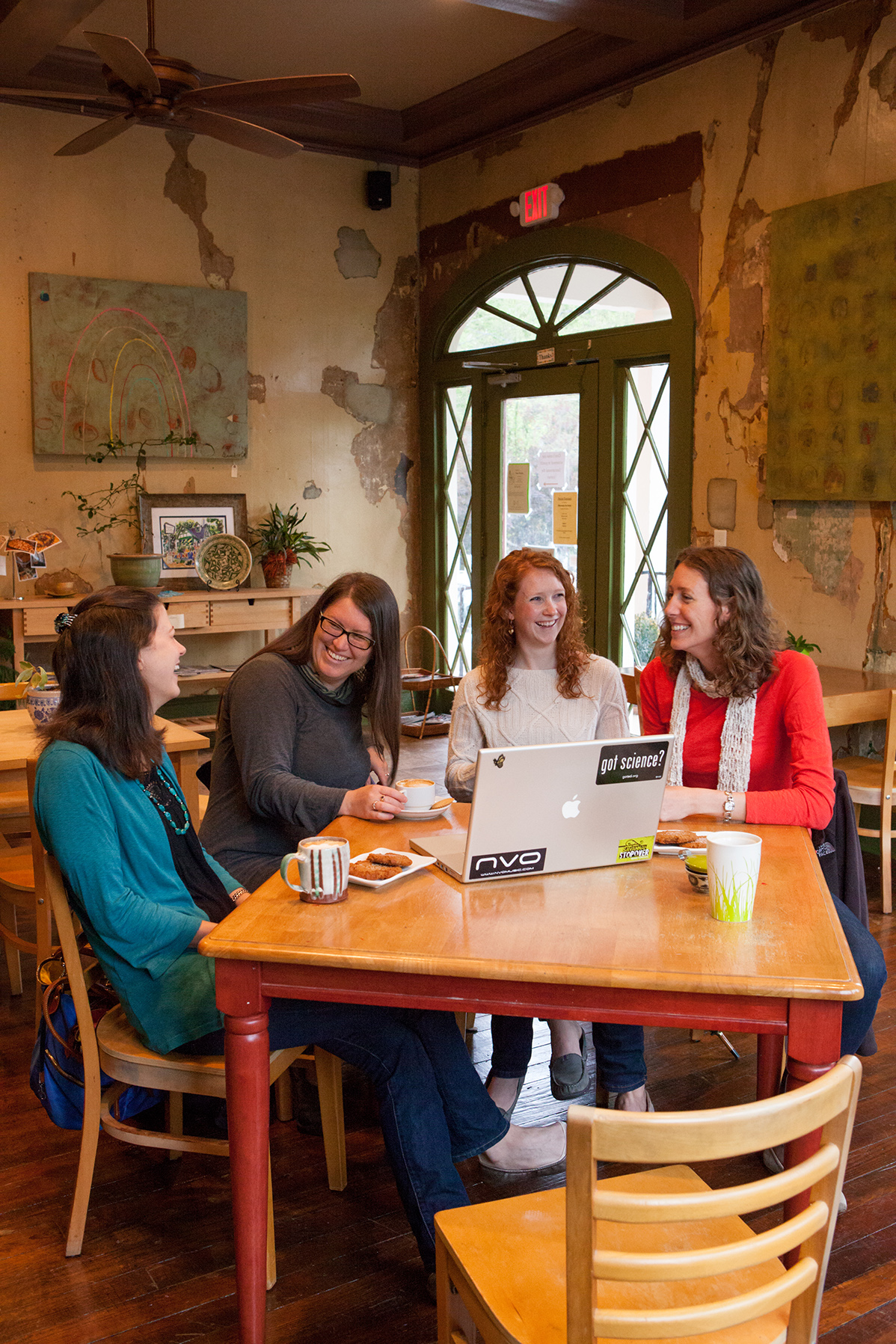How researcher Alyssa Gehman sold both the sizzle and the steak!

By: Cynthia Adams | Photos By: Nancy Evelyn
Use social media to sponsor science, doctoral student Alyssa Gehman marveled? Well, it just might even be fun. In business parlance, they call the one who breaks out of the pack to make things happen a “rainmaker.” As things developed, Gehman not only advanced her work as a doctoral student and UGA Wormsloe Fellow, but she became a rainmaker. Gehman didn’t just wait for something to happen when she needed funding for her scientific studies in parasitology—admittedly not the sexiest, most compelling of subjects. Mind you, she didn’t do a rain dance down Broad Street, but something nearly as outré. She tried crowdsourcing, also known as crowdfunding. And she spun a creative story making a mud crab parasite astonishing. And Gehman aced the SciFund Challenge. As a Savannah journalist quipped, “Alyssa Gehman knows what sells. Sex.”
Say someone is working on a scientific hunch. An innovation, an original idea.
To advance this idea, they are prepared to sacrifice hours, days, years, even, to refine their working premise. The outcome may advance human knowledge—perhaps making the world safer, better, or wiser. But to do so—the work of moving hunches toward actual outcomes—doesn’t just rely upon hard work. It hinges on cold, hard coins.
For a graduate student undertaking research, one such as Alyssa Gehman, funding is everything. Sourcing and finding funding are changed beyond the age-old grind of grant writing and application. In recent years, grant and funding sources came to a near halt as the gears of the economy clogged and governmental budgets dwindled.
Yet money remains fundamental to research—greasing the gears, providing impetus, in providing for supplies, travel, and essentials. But where to find the dollars?
Gehman’s major professor, James Byers, who was the reason she came to UGA in the first place, had begun encouraging his students to seek funding, employing a different approach— crowdsourcing. Crowdsourcing, also called crowdfunding, uses social media for a new purpose—marketing scholarly work and ideas to the general public and soliciting grassroots support. The Scifund Challenge was one such place, but one sponsored by academics and scientists. Byers was a big proponent.
Thanks to Gehman’s drama professor mother, who had always coached her on presentation skills, Gehman had a built in go-to person when it came to performance. And with new innovations in fundraising, performance has become a key aspect of communicating ideas to an audience.
For example, the UGA Graduate School had become a sponsor of a popular program known as the 3MT, held in the spring. The 3MT program requires students to compete, presenting their graduate research in three minutes to a general audience and judges, who then vote and determine cash prizes.
Now, Gehman needed to raise money to study a type of marine parasite and Byers was strongly advocating SciFund to his graduate students.
Encouraged by Byers, Gehman went full out, throwing herself into crowdsourcing as she had always done with any challenge. And everybody— grandmas, friends, and outright strangers, donated.
Creative funding initiatives, as Meredith Welch-Devine, who is the associate director of the university’s Center for Integrative Conservation Research program says, are touching more and more UGA students. At least two other graduate students, Sean Sterrett and Kristina Summers, also joined the crowdsourcing channel to fund their research.

GEHMAN WHO?
The Scifund Challenge resonated for Gehman from the get-go. A doctoral student in the Odum School, focused upon parasitology, she always preferred dancing to a very different beat. The idea of selling her ideas to a public that knew little to nothing about her chosen work didn’t defeat her at all.
“The other cool thing about Scifund is, they posted videos and a forum. They taught an online course and stressed communicating.” This was familiar ground for Gehman. And, there was another chestnut. “Being critiqued by scientists we don’t know, who don’t do the research we do, was very valuable.”
Presenting, making a case for her research and videotaping it, competing for funding through Scifund, all seemed like a wrinkle that just might prove interesting.
To understand why, you would need to know Gehman’s past.
Gehman is a blue-eyed, black-haired human firecracker, with a zest for performing arts, imagination, creativity, and science, in almost equal measure. The Waldorf-schooled student from Seattle says she didn’t fixate on the arts-versus-science career conundrum until much later. And why should she? Gehman had found she liked nearly everything.
After all, the more she knows, as Gehman explains it, “the more interesting the world is.”
The Pacific Northwest was where Gehman came of age, with a research engineer father and a mother who teaches drama at the University of Washington.
“Science and arts were both strong in my family.” Her father develops algorithms for heart defibrillators. Gehman’s professor mother taught and prepared actors. (In time, the mother taught her daughter how to do vocal warm ups and seven preparatory steps, including an “intention list,” to employ before making public presentations. This, Gehman points out, sure did come in handy.)
She was a bit of an adrenalin junkie, and became a springboard diver in high school, and later, in college, Gehman learned to do trapeze work. Common threads were physical challenge and performance.
“When I was a kid in high school, I wanted to be an actor. Then I took a marine science course, and had two amazing teachers. They were challenging, and we learned college level things. They even took us on a student trip to Maui. Just amazing teachers,” Gehman recalls about her teenage years in Seattle.
“We had a big outdoor program, and we learned to scuba dive. And this is an inner city school!” she says, picking through her lunch at an Athens bakery. The science teachers had a significant impact on Gehman’s destiny, but their student took a few creative side trips. Along with a core group of friends, she learned to make and edit videos while in high school, and to storyboard and edit. She became part of an actor’s studio.
Gehman loved music, and decided to become a flautist. She studied dance, acting, and singing. She knits, crochets and sews. “I’m a hobby collector,” she laughs. She also liked almost every outdoor sport, sometimes slack lining on an improvised trapeze between two trees, skiing, or rock climbing—perhaps as passionate about these adventures as much as science. Since high school, she knew that her life’s work would be marine science. “That was it,” she says.
And she decided that, like her mother, she wanted to teach.
Gehman attended college in Colorado due to her love of outdoor sports, she admits. “I went there because one of my high school teachers told me to get a general biology degree, then specialize.”
When Gehman took her first parasitology courses, she found focus.
“The hook was the idea that every type of organism has at least one parasite. Most living organisms are some kind of parasite…they are complex systems. Parasites can manipulate host behavior.” In Colorado, she was told about a professor named James (Jeb) Byers at the University of Georgia, who is now her advisor.
“I knew I wanted to do parasite ecology. Just about everybody who knew this told me Byers was the one to study with…otherwise, I wouldn’t have considered coming to UGA.”
She had never been to the South before, let alone Georgia. “What I’ve found, is, it’s a really nice community in ecology, a solid community, and intellectually engaging,” she says.
But why parasites?
Gehman sums it up. “The way the world works, if parasites disappeared, we would learn that parasites outnumber us, and they serve a function.”
This was a message that apparently struck a chord when Gehman competed for monies with the support of SciFund. “It was 100 percent funded,” she reports.
“I emailed probably 100 family and friends. I said I was raising money for research, and if interested, asked them to check it out. Went onto Facebook. UGA’s ecology writer, Beth Gavrille, wrote a press release.”
Then Gehman got a break while doing research in Savannah. “Mary Landers writes for the Savannah Morning News and she ran into me. She likes science. So I decided to contact her, and she wrote about the SciFund project.” It was Landers who quipped later about Gehman’s mud crab research on the “eyebrow-raising behavior of a parasitic barnacle that attacks it.”
Daniel Harris, Gehman’s friend and lab mate, made business cards and handed them out to people in Savannah. During the annual Tybee Island Water Fight, a major crowd-draw, they laminated a bunch of Gehman’s cards and handed them out. She grins.
“To be fair, I have generous family and friends,” she says. “My friend’s grandmother gave me money. She’s not a scientist, but the wife of a missionary.” Gehman collected steady contributions ranging from $5-$250. She received $1,200 in total.
“Somebody from New Zealand gave me money. I got money from a father whose daughter was going to UGA. He called me and chatted. He—I believe he might have been a cop?” Gehman had interacted with so many different people she searches to place every donor.
“I loved it. It was helpful.” She mentions it was an affirmation. “My sister’s boyfriend’s dad sent me money from the west coast. He’s a fishery scientist.”
Then, Gehman discusses the follow up, which emulates professional fundraising efforts. “We have to give them something, as a thank you.” Gehman made oyster jewelry and other premiums as donor gifts. “
“A donation of $20 meant a gift of an oyster necklace, or soap dishes. If I received a $30 donation, it meant that I thanked the donor in my research presentation.” This was a very southern thing to do—to formally acknowledge a gift.
“As part of SciFund, they collect data on how we’re doing,” she says. She reports back, and is also writing about the process.

Parasite Ladies photos taken at Donderos
Members:
Alyssa Gehman (gray shirt/glasses)
Dara Satterfield (blue sweater)
Sarah Budischak (red shirt)
Carrie Deogh (skyped from Japan)
Alexandra Fritzche (red hair/white shirt)
GEHMAN HOW?
“SciFund is different in that it is run by a group of professors, who want to get scientists to communicate,” explains Gehman. “Using a platform to raise money for our research, and telling people why they should fund it.”
Crowdfunding sites such as Kickstarter feature a free-for-all of both entrepreneurial and nonprofit ideas, while also making a case for funding. Donations are solicited in exchange for contributions, goods, or sometimes simple good will. When the funding goal is achieved, donors reap rewards, which are sometimes merely warm fuzzies. In Gehman’s case, premiums for donors included an oyster shell soap dish, or mention in her research, or even her own hand-made jewelry.
According to the news magazine Forbes, crowdfunding efforts tripled between 2011-2013. In 2013, Forbes projected more than $5.1 billion would be raised worldwide.
Gehman recalls, “I first found out about it through a friend in California who is friends with the founder.” Yet, despite all her background knowledge and particular skills in performance, she admits: “I was scared. You’re signing on to make a video.”
But make it she did.
The link describing Gehman’s research in coastal Georgia, is still live: www.rockethub.com/projects/7476a-climate-for-castrators. Mary Landers’ story remains on the Savannahnow website.
“The video is a nice encapsulation of my mission.” Gehman is also a Wormsloe Fellow, who spoke after UGA’s President Jere Morehead last December when in Savannah.
When Gehman initially arrived in Athens, she discovered another new stress-releasing interest—something hardly new for her temperamentally. “I started with a dance/gymnastics/ martial arts/singing group called ‘Capoeira’—which is developed from the Brazilian slave culture.” She also started to reach out to others and find community again.
“We gathered four friends, and we call ourselves the Parasite Ladies.” Despite the name, not all of them are parasitologists like Gehman. One is in marine systems; one studies butterflies. And another is applying for a post doc. The women take turns choosing the place and plan, and work through issues together.
The members of the Parasite Ladies choose a singular question to point them towards solutions: “What is the most interesting thing I could do?”
The Parasite Ladies created their own challenge, fueled by imagination. In turn it appears that the world becomes their oyster.









